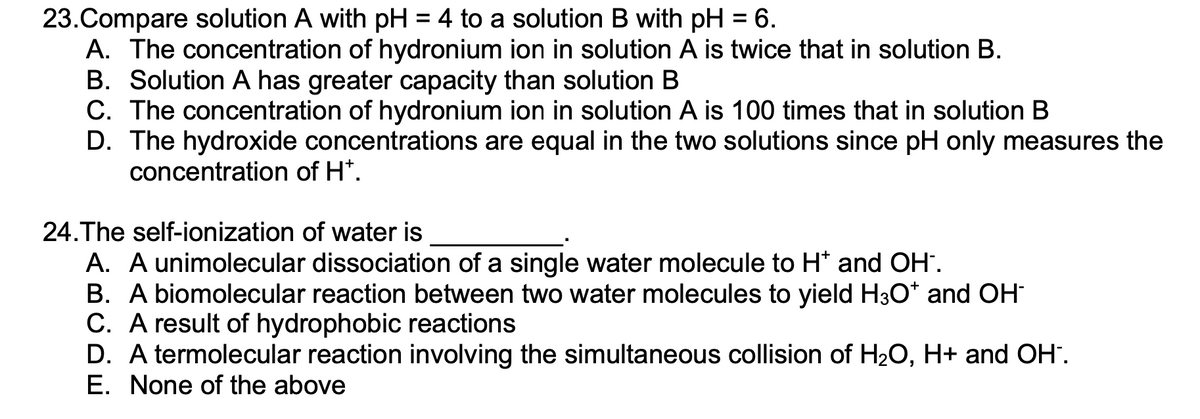23.Compare solution A with pH = 4 to a solution B with pH = 6. A. The concentration of hydronium ion in solution A is twice that in solution B. B. Solution A has greater capacity than solution B C. The concentration of hydronium ion in solution A is 100 times that in solution B D. The hydroxide concentrations are equal in the two solutions since pH only measures the concentration of H*. 24.The self-ionization of water is A. A unimolecular dissociation of a single water molecule to H* and OH-. B. A biomolecular reaction between two water molecules to yield H3O* and OH C. A result of hydrophobic reactions D. A termolecular reaction involving the simultaneous collision of H₂O, H+ and OH-. E. None of the above
Ionic Equilibrium
Chemical equilibrium and ionic equilibrium are two major concepts in chemistry. Ionic equilibrium deals with the equilibrium involved in an ionization process while chemical equilibrium deals with the equilibrium during a chemical change. Ionic equilibrium is established between the ions and unionized species in a system. Understanding the concept of ionic equilibrium is very important to answer the questions related to certain chemical reactions in chemistry.
Arrhenius Acid
Arrhenius acid act as a good electrolyte as it dissociates to its respective ions in the aqueous solutions. Keeping it similar to the general acid properties, Arrhenius acid also neutralizes bases and turns litmus paper into red.
Bronsted Lowry Base In Inorganic Chemistry
Bronsted-Lowry base in inorganic chemistry is any chemical substance that can accept a proton from the other chemical substance it is reacting with.

Step by step
Solved in 5 steps with 2 images









